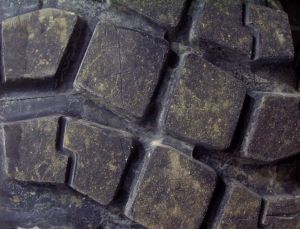Driving Tips to Avoid Potholes – And Rising Tire Prices (and How to Report Potholes!)
Posted by admin on May 30, 2012 in Blog | 0 commentsHere’s why: Potholes destroy tires, and the price of tires is rising sharply due to a supply shortage of natural rubber (yes, it still comes from trees, mostly in southeast Asia) and increasing demand from China, where car ownership is undergoing double-digit growth. Petroleum is also used in tire manufacturing, adding further to cost volatility. Blow out just one tire on one pothole and expect to pay out more – one major tire manufacturer increased prices three times in 2011 alone. 
Damage from potholes doesn’t stop at tires. In a blink of the eye, you can experience $1000 of damage, possibly more, when your car hits a pothole – it’s possible to impair your car’s shock absorbers, suspension system, struts, rims and alignment as well. According to the American Association of State Highway and Transportation Officials, the average additional vehicle operating costs due to rough roads in 2007 was $400, with higher costs experienced in places including Baltimore ($589), Concord, NH ($656), Dallas-Fort Worth ($512), Los Angeles ($746), New Orleans ($622), New York-Newark ($638), Oklahoma City ($631), San Francisco-Oakland ($705) and Tulsa ($703). Deteriorating roads and general inflation since 2007 likely pushed these costs higher.
But there are things you can do before, during and after hitting a pothole. A preventive strategy is more about preparation, driving skills and reacting appropriately when a pothole sneaks up to surprise you. We suggest you approach it on three fronts, as follows.
Adopt smarter driving practices
You can reduce damage with vehicle preparation and driving with good sense:
- Check your tire pressure to keep it at the tire manufacturer’s recommendation. If a tire is too soft, it handles poorly and in a sudden bump may rupture if the wheel rims pinch it against the jagged edge of a pothole. Over-inflated tires are more susceptible to damage as well.
- Have a clean windshield! Your field of vision is critical.
- Observe the traffic ahead of you – if other cars are swerving and stopping, it’s because of a problem in the road.
- Beware of puddles – what might look like a little surface water might have a nasty, deep and sharp-edged pothole lurking below.
- Reduce your speed on roads that are prone to potholes. Slower hits generally involve less damage, a simple matter of physics.
- Stay focused and pay attention to the amount of traffic in front, behind and alongside you. You might be able to avoid potholes but do not want to cause an accident while doing so.
React quickly, intelligently when a pothole is upon you
Assuming you drive defensively – and do not tailgate, which restricts your ability to anticipate potholes or sudden braking by the vehicle in front of you – here is what to do if you are just about to hit a pothole:
- Brake only lightly, if at all. And do something counterintuitive by letting off on the brakes entirely the moment before impact. Clamping down on your brakes at higher speeds not only tempts rear-end collisions but also compresses the front-end suspension system, increasing the damage.
- Hard braking can actually cause greater contact between the tire and the pothole where it might otherwise glide over it.
- Do not swerve in a last ditch attempt to avoid the pothole. Aside from creating a hazard for vehicles immediately behind and beside you, you risk hitting the pothole on an oblique angle, which can cause more damage to the tire, wheel rim and alignment than if you hit it perpendicularly.
Reduce the damage in the aftermath
Post-impact, the right moves can at least limit the extent of the damage:
- Immediately pay attention to whether or not you have a flat tire. If so, minimize how much you drive on it, pull off the road as soon as you can do so safely where you can change the tire to your spare. This will minimize the damage to your wheel rim.
- Even without a flat, there may be preliminary damage. At your next stop, check tire rims to see if they were bent, if there is visible cord material or bulging. This could fail later while driving.
- Note if your car pulls to one side without corrective steering. This suggests the wheels are out of alignment and need mechanical attention.
In most municipalities, you can and should report potholes to the streets department – use a smartphone app such as SeeClickFix or SaveMyTire.com, or the local 3-1-1 or other call-in line. You might also be compensated for your loses if that pothole was reported previously and left unfixed, however rules for this are determined on a city, township or county level.
ARTICLE SOURCE: http://www.pothole.info
